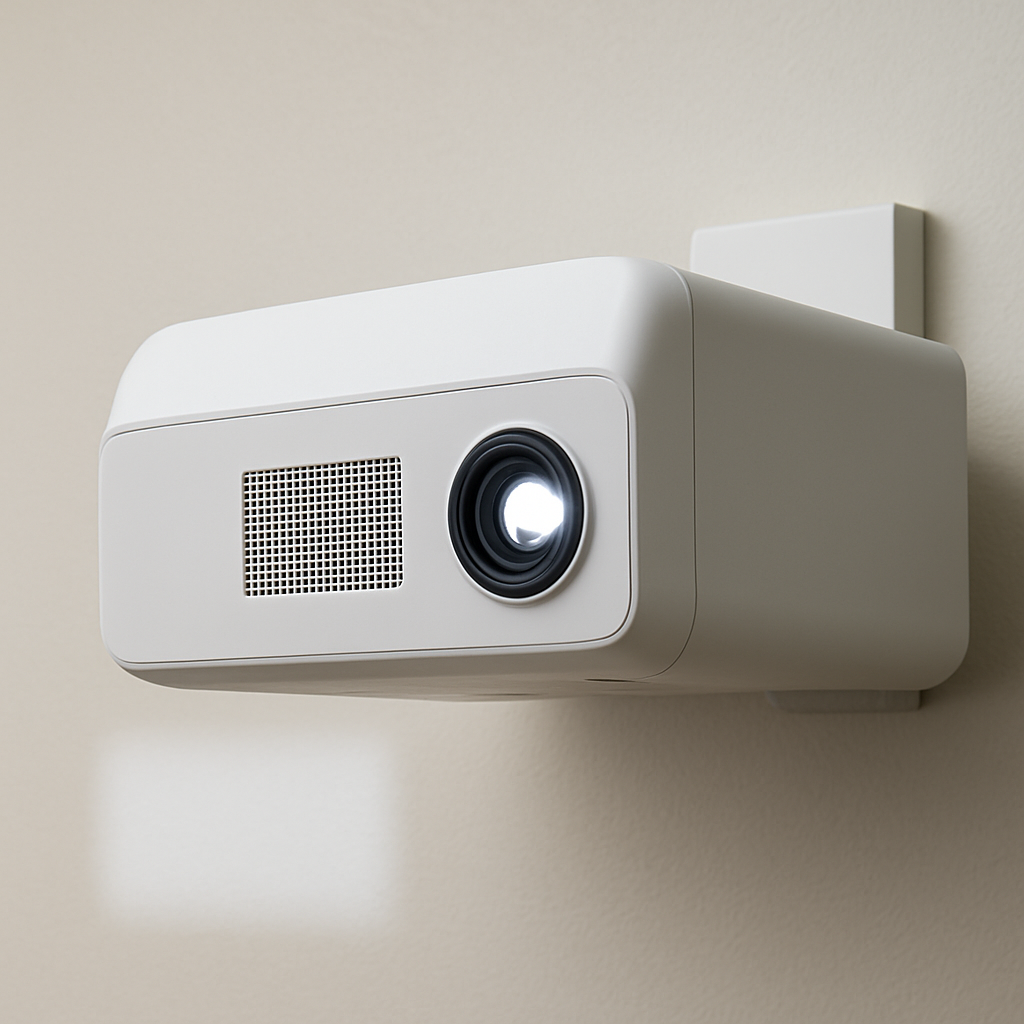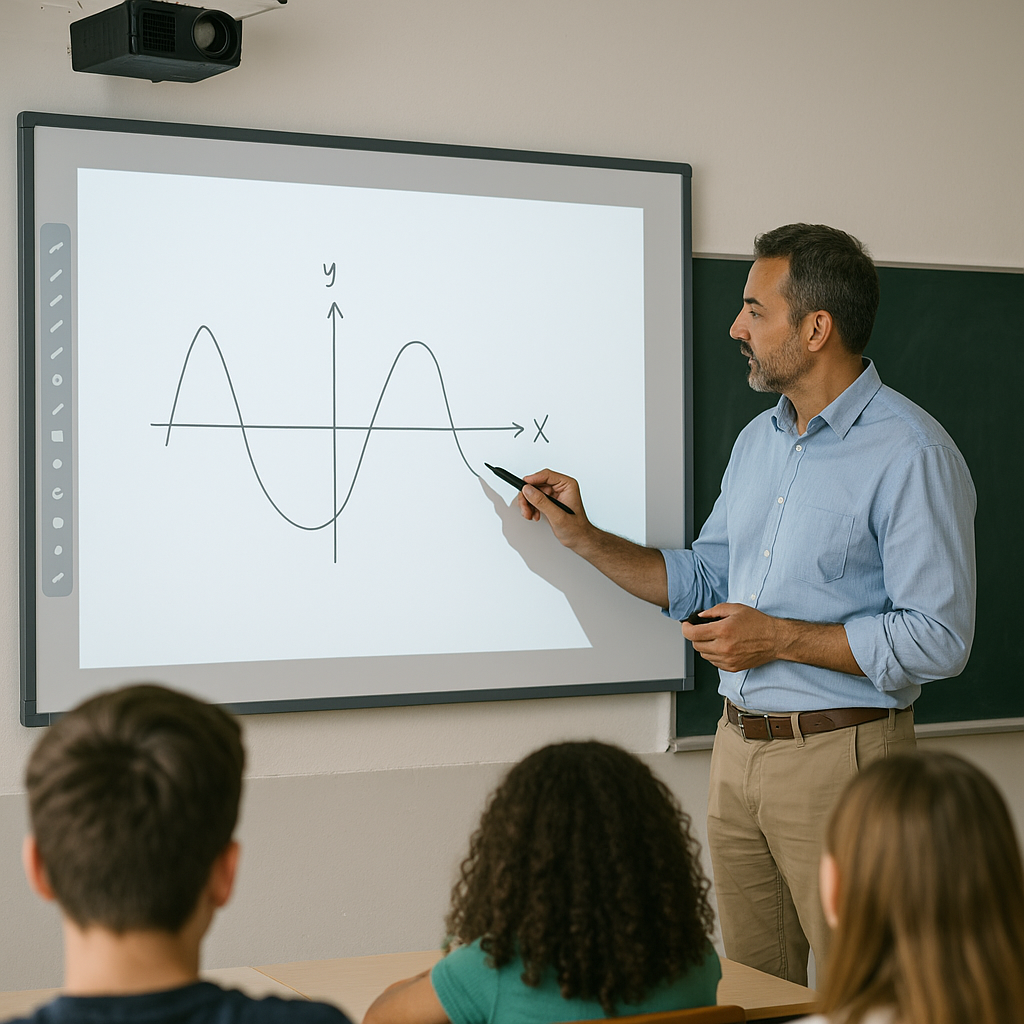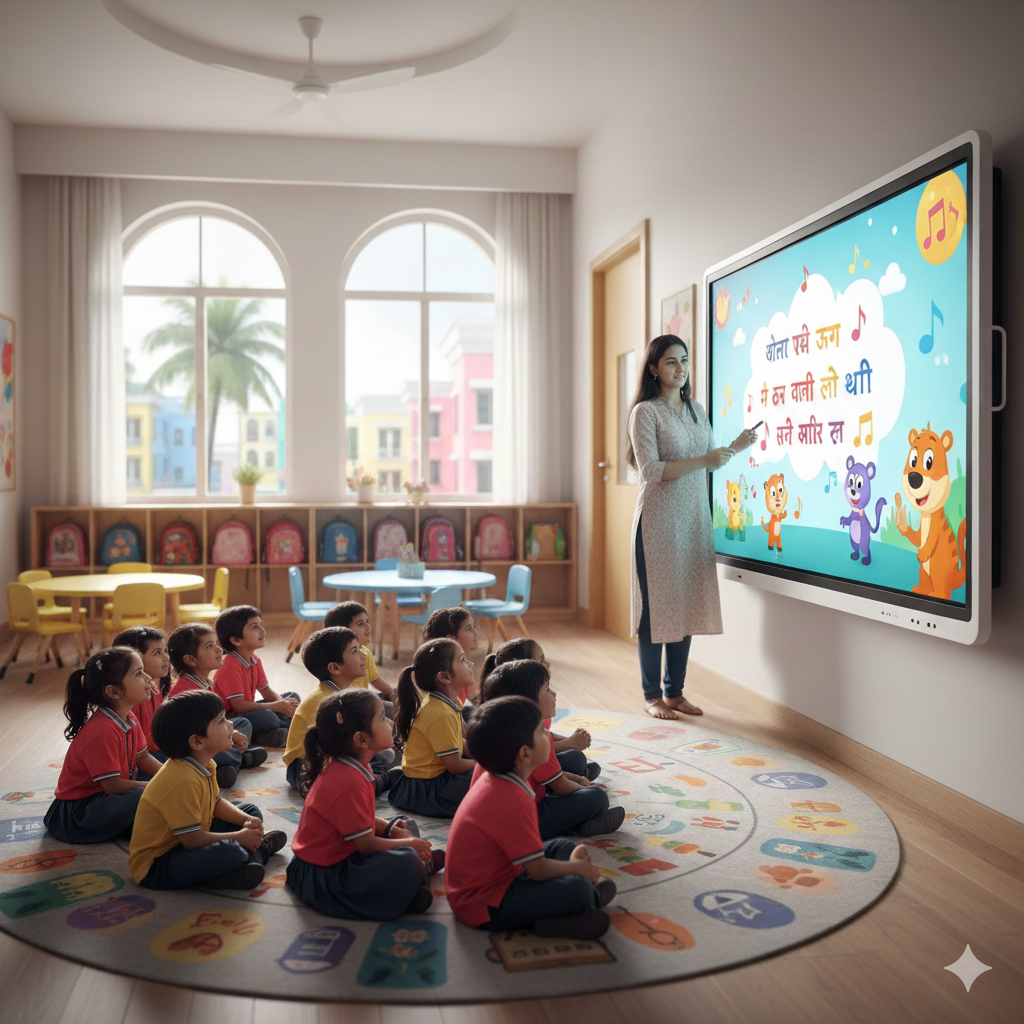Looking for a Touchscreen Projector? Here’s Why Schools Are Choosing Smarter Solutions

The term touchscreen projector is gaining popularity among schools and colleges across India. It seems like the perfect middle ground between traditional projectors and expensive smart boards. But does it really meet the demands of modern classrooms?
With NEP 2020 pushing for digital integration and hybrid models becoming the norm, institutions need solutions that go beyond just touch and projection. That’s where the market gets tricky and where many schools risk investing in outdated technology.
This blog discusses what touchscreen projectors offer, where they fall short, and what forward-thinking educators are choosing instead.
What is a Touchscreen Projector?
At first glance, a touchscreen projector looks like a simple, budget-friendly way to add interactivity. It combines projection with touch capability, usually using IR sensors or DLP technology allowing teachers to write or navigate directly on the projected surface.
That’s appealing. Schools imagine turning any wall into a digital board, engaging students with interactive lessons, and making learning more visual.
It’s no surprise that searches for terms like interactive projector, digital board for online teaching, and smart board for classroom price in India have been steadily rising.
But the ground reality is different.
Where Touchscreen Projectors Struggle in Real Classrooms

Ask any IT admin or educator who's used one. Touchscreen projectors sound convenient until they’re installed.
According to multiple school AV technicians in Delhi and Hyderabad, calibration issues are common. “You set it up today, and by tomorrow, the touch misaligns. We spend hours just fixing that,” said a tech lead at a private CBSE school.
And it’s not just calibration.
- Limited lifespan of projection lamps (often under 5000 hours)
- Poor visibility in bright rooms
- Lag in touch response
- Requires separate PCs or laptops to function
- High maintenance cost due to multiple parts
In short, touchscreen projectors still depend on a fragmented setup—projector + whiteboard + computer + speakers + mic—to deliver the classroom experience teachers want.
It’s functional, but not future-ready.
Check these warning signs if you're unsure whether it's time to upgrade your classroom projector.
What Experts Are Recommending Instead
More school heads and IT departments are rethinking their approach. The demand isn’t just for interactive hardware anymore. It’s for an all-in-one smart classroom device that works out of the box, scales easily, and supports both offline and online teaching.
"Schools need something that reduces tech friction. Teachers shouldn’t be worrying about cables or calibration," says an education technology consultant who advises multiple private schools in Maharashtra.
This is where Roombr fits in—not as another touchscreen projector, but as a next-gen smart classroom solution.
Roombr: Beyond Just Touch and Projection
Roombr may project onto any flat surface, but that’s just the beginning.
Unlike traditional touchscreen projectors, Roombr integrates everything in one compact unit:
- High-lumen projection for bright, clear visuals
- Interactive touch using an IR pen—no lag, no calibration
- Built-in computer with Windows OS
- Dual cameras for lecture recording and hybrid classes
- Integrated mic, speaker, and content-sharing tools
No wall mounts. No external PC. No separate AV system.
You just plug it in, power on, and teach—whether you’re explaining algebra or streaming a guest lecture.
This is especially relevant in India, where infrastructure in older school buildings can’t always support mounted panels or ceiling projectors. Roombr works on any clean wall, in any room, across rural or urban setups.
Cost-Effective Without Compromising on Capabilities
Many school administrators focus heavily on the upfront digital board price in India. But what often goes unnoticed is the total cost of ownership.
A standard touchscreen projector setup may cost less initially, but over 3–5 years, the costs add up:
- Frequent bulb replacements
- Downtime due to touch errors
- Maintenance visits
- Compatibility issues with updated software
Roombr eliminates all these. It’s designed to cut long-term costs while delivering more functionality per square foot.
And because everything comes built-in—software, hardware, display, and connectivity—support becomes faster, and training becomes minimal and hassle free. Most teachers get the hang of it on Day 1.
How Roombr Compares to Common Touchscreen Projector Setups
Before You Invest—Ask These Questions
If you’re still evaluating interactive boards for classrooms or searching touchscreen projector vendors online, ask:
- Will this device work on any wall?
- Is it future-proof for hybrid learning?
- Can teachers use it without IT help?
- Will I need to buy additional components?
If the answer to any of these is “maybe,” you’re likely looking at more hidden costs and less classroom impact.
Final Take: Smarter, Not Just Interactive
Touchscreen projectors had their moment. But in 2025 and beyond, they’re no longer enough. Schools and universities need flexible, scalable, and intuitive solutions that don’t rely on outdated setups.
Roombr offers just that—a smarter path forward.
Instead of assembling a tech patchwork, choose a solution that simplifies everything. Whether you’re running one classroom or a full campus, Roombr delivers better teaching outcomes, with fewer headaches.
Looking Beyond Touchscreen Projectors?
Roombr gives you more—interactive teaching, lesson capture, and zero setup delays. It’s built for classrooms that need results, not just hardware.
Schedule a hands-on Roombr Digital Classroom walkthrough and see how it fits your institution’s needs.
Foziya Abuwala
Share
Step Into the future of
Education with Roombr









.png)







